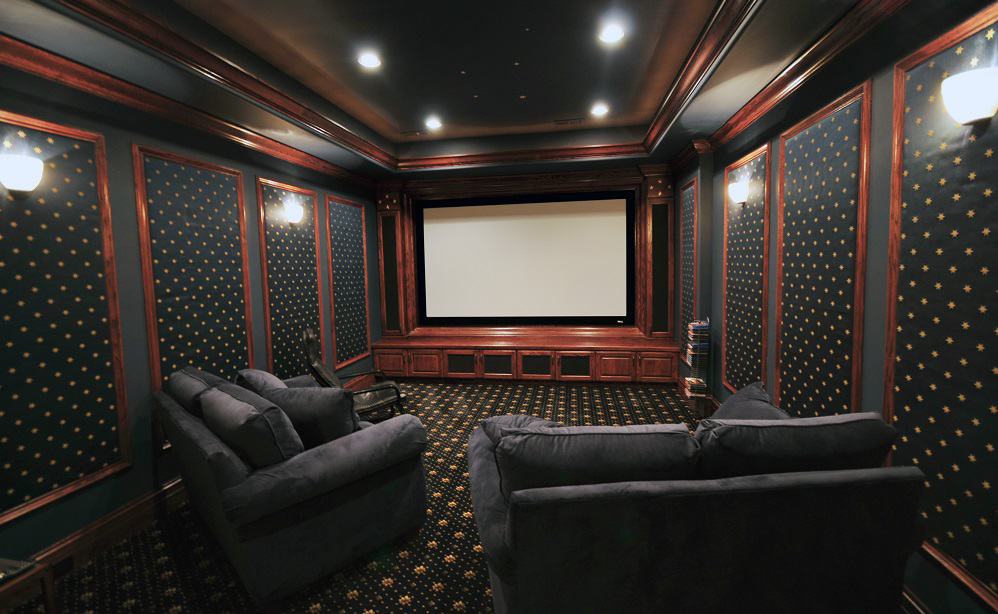For as long as I can remember, we have been projecting moving images onto white screens. However, Light grey screens have become an option, and it isn't for aesthetic reasons. Otherwise known as high-contrast screens, gray screens offer a different viewing experience.
Which is the screen that works best isn't universal. Whichever color projector screen works well in one home movie theater might not work so well in another.
Traditional white screens provide accurate and uniform images in rooms that are pitch black or where the user has total control over the ambient lighting.
Grey screens help to improve the depths of black and other very dark colors. Brighter parts of the image still shine as vividly as they should; they suffer no detrimental effect.
Two main factors require consideration when deciding your screen color: the type of projector and the lamp it employs, and secondly, the set up of your home movie theater.

Higher contrast projectors transmit the clearest and sharpest images. That preserves all of the darkest colors, maintaining that the lighter shades become more vivid alongside them.
The design of top-end projectors guarantees that they work best on white screens, almost irrespective of lighting conditions.
Gray projector screens are otherwise known as high contrast screens and designed to absorb ambient light. The more light that is absorbed, the less there is to bounce off the screen.
White projector screens reflect light and make dark colors dull. Contrast appears low until white colors fade into insignificance and bright colors appear dim.
Therefore, older and poor-quality projectors with fewer lumens output project poor-quality images.
Gray screens compensate for this.
Modern high-end projectors have increased contrast performance. Whether you use a gray or white screen makes no difference, you will achieve superb results on any color screen.

If you're serious about your home movie theater, you will have already taken care of soundproofing the walls, doors, and windows. Blinds and heavy door curtains will also help improve projection. The color of the room heavily affects the quality of the projected images.
Painting walls, ceilings, and floors in dark colors or black ensure less ambient light leakage, resulting in exacting picture quality, color, and contrast on a white projector screen.
Both colors cost around the same for equivalent quality.
If you're adamant that you want a white screen, then invariably the projector will need to be of a higher specification, ergo, more expensive.
There will also be the added consideration of furniture, blackout curtains, and blinds, plus dark surface coverings.
Gray screens aren't as demanding and are proven to work well in rooms that aren't entirely blacked-out. A gray screen is perfect for the casual viewer who opts to watch from the comfort of a living room with life going on around them.
They also suit movie theatres where pitch darkness is impossible to achieve.
If your projector is an older or lower spec model, a gray screen will compensate somewhat for poor image clarity, saving you money on buying a replacement projector.
Overall, a gray screen system is often the more affordable of the two as a result of external factors detailed above.
Not only do some white screens have high-contrast silver coatings to absorb ambient light, but others also have integrated sound wave passages.
It is a system of minuscule, evenly-spaced holes across the screen that allows for the passage of sound. With the speakers and subwoofer hidden behind the screen, viewers are treated to a more realistic audio and video experience.
If your home movie theater has achieved total blackout, i.e. the walls, floors, and ceilings are dark, windows covered with solid blinds, and doors curtained off, then there is no reason why you shouldn't opt for the classic white screen and enjoy it's color depth and accuracy.
For the more casual viewer, or in a room where utter darkness isn't possible, a grey screen is the way to go. Enjoy all of the action of the movies with the blackest blacks and most vivid bright colors.
